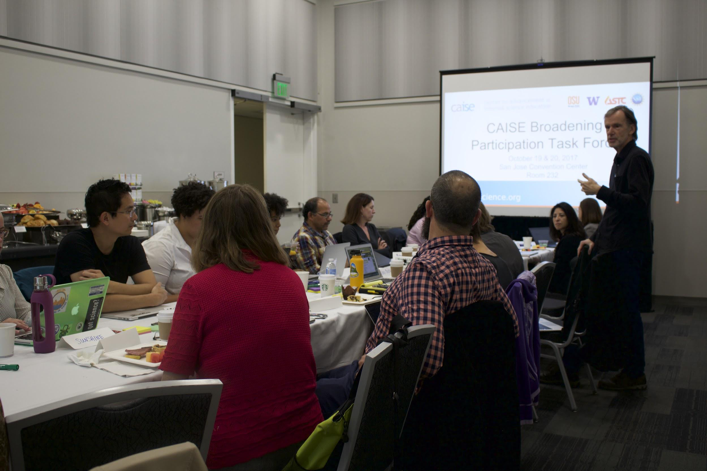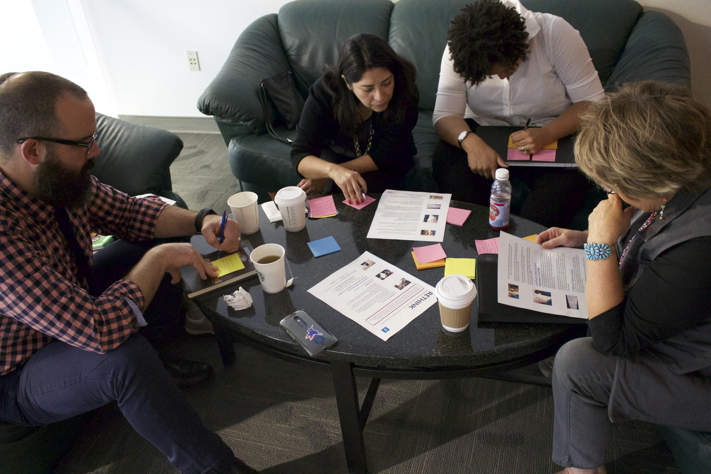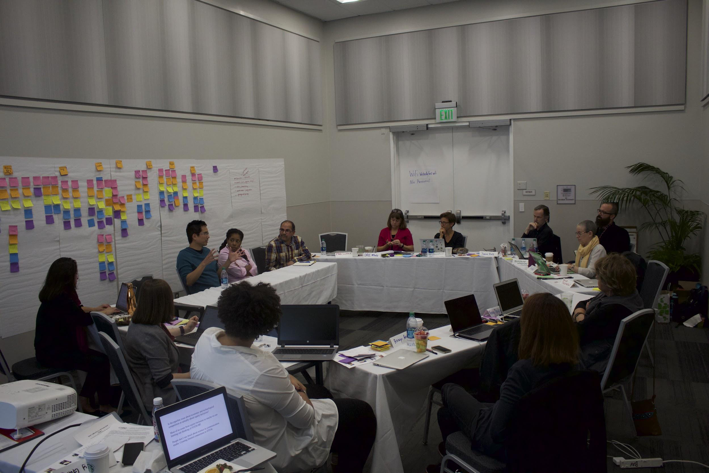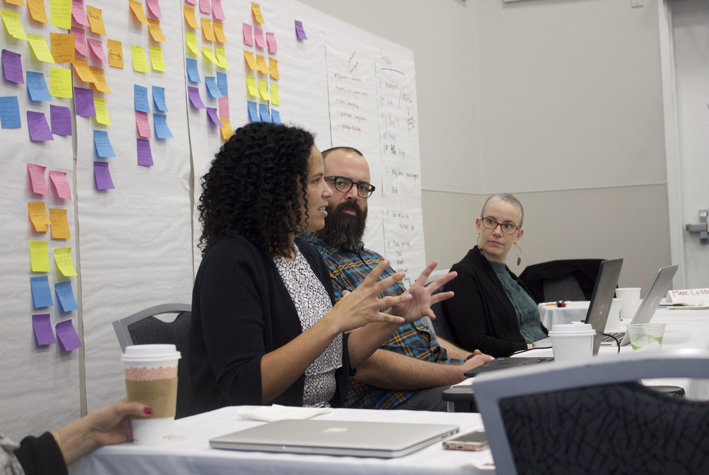Broadening Participation Task Force: February 2018 Update
How can we develop a more expansive, yet critical, view of what we mean by “broadening participation in STEM”? How can our programs be designed or re-designed to more fully integrate evidence on broadening participation? What resources do organizations and individuals need to better document and assess how programs advance broadening participation?
These are some of the key questions guiding the new CAISE Broadening Participation Task Force. The Task Force is part of CAISE’s new charge to explore synergies and overlap between the informal science education (ISE) and science communication (SciComm) fields. The 15-member group, comprised of both ISE and SciComm practitioners and researchers, first convened in October at the Association of Science-Technology Centers (ASTC) 2017 Conference in San Jose to meet and share common challenges and questions across both fields related to broadening participation.




A synthesis of the experiences shared and discussions from the two-day gathering led to the identification of five key drivers that our fields face as we consider what broadening participation means to our work:
- Definitions—What counts as participation and the goals of "broadening participation" are often narrowly defined in STEM, as are the intentions of such efforts. This sometimes results in a default focus on career pipeline goals, to the exclusion of other important purposes for, pathways to, and forms, outputs and outcomes of participation, such as lives empowered by STEM literacy, knowledge, and identity.
- Dominant Cultural Norms—Many U.S. efforts to broaden participation adopt approaches to STEM that are closely associated with the dominant culture, which in itself exacerbates, rather than ameliorates, current inequities and under-representation of non-dominant groups. These approaches can also lead to adopting a deficit orientation, “essentializing,” or attributing natural, essential characteristics to members of specific culturally defined groups (gender, ethnic, etc.) ignoring the intersectionality of identity and experiences and to an assumption that broadening participation can be resolved through access alone, without changing the culture and approach of the program, organization or setting. .
- Systemic Issues—Efforts to broaden participation are often “added on” to already-existing work and not led or fully embraced by institutional leaders. They are also frequently supported by finite funding streams which, when depleted, result in the discontinuity between organizations and communities where trust and STEM engagement had traction. Aligning executive and board priorities with those of the intellectual leadership in broadening participation is key for future progress
- Ecosystems—Without an ecosystems framing, many efforts to broaden participation remain siloed and uncoordinated across the STEM learning landscape and hence fail to leverage key community resources, assets, and opportunities, minimizing the potential impacts they might otherwise have.
- Evidence—The field needs systematic documentation of what effective broadening participation efforts look like and for whom, what they lead to, and how institutions, as well as communities, might benefit from them. This gap contributes to a lack of prioritization and vision.
The Task Force is currently developing a suite of professional learning resources including a framing document, a set of practice briefs and a diagnostic tool for release in 2018, intended for informal STEM education and science communication leaders, who want to develop their staffs’ capacity to better design and implement effective broadening participation approaches.
One ASTC 2017 Conference attendee responded to initial findings the Task Force shared during a conference session in this way:
Our discussion about the what, why, and who of participation challenges how our field can "broaden participation in STEM" because it points out the inevitable failures and shortcomings that arise from our western paternalistic perspective, our assumption that we already know what it valuable to participate in and that it is something that people are not already doing. We need to start by acknowledging that broadening participation has often historically been about checking a box and that we need to do some work on ourselves as individuals, institutions and the field in seeking to support diversity, equity and access. This includes recognizing the gulf between what we currently think we have to offer and what people want and are interested in, and working to bridge that gulf in part by listening and taking part in community work and in part by doing introspection about what we are capable of, what deep social mission we want to serve and who we are most committed to working with.
For further reading CAISE recommends the July 2017 issue of Science Education that focused on equity and out-of-school learning: http://onlinelibrary.wiley.com/doi/10.1002/sce.2017.101.issue-4/issuetoc.